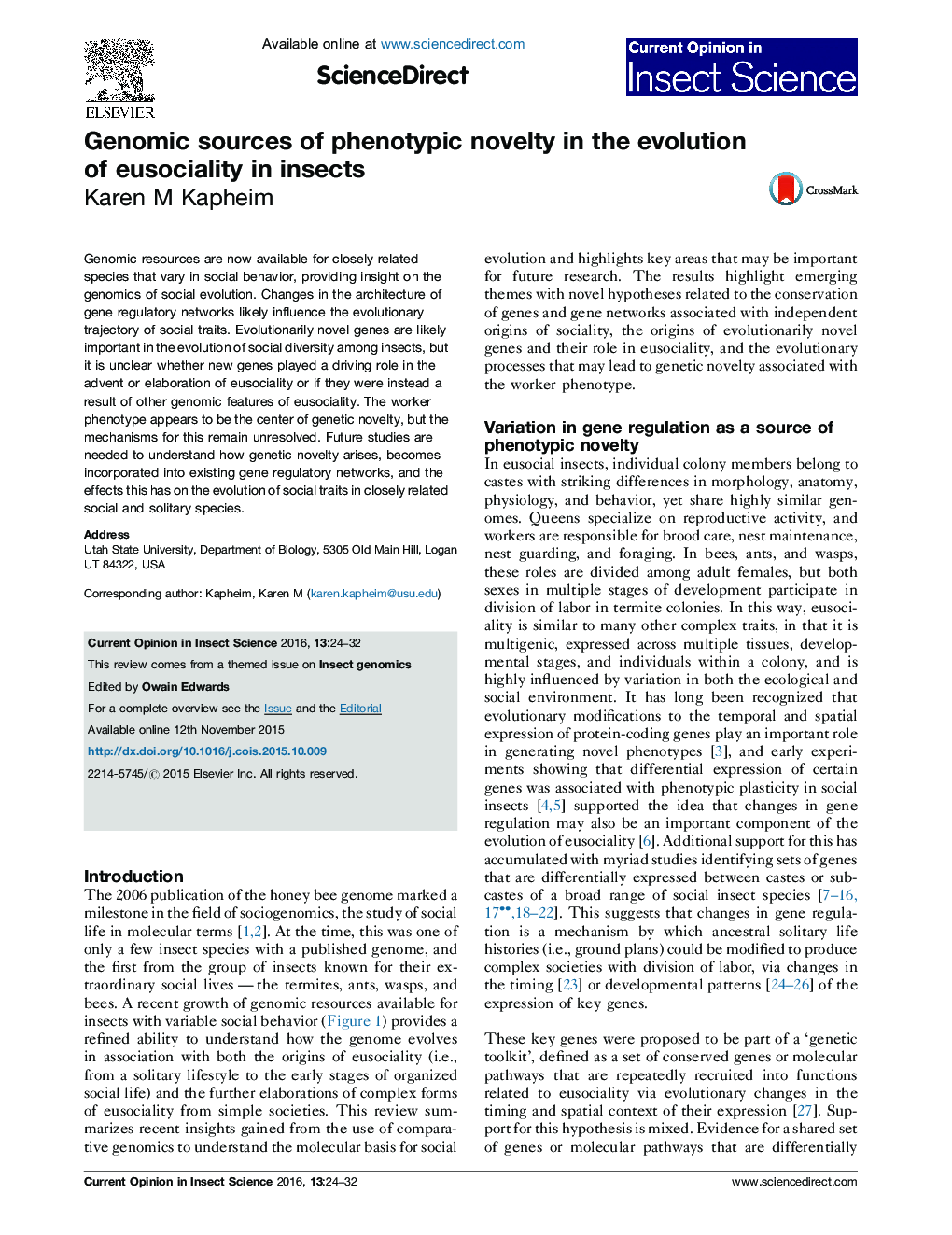| Article ID | Journal | Published Year | Pages | File Type |
|---|---|---|---|---|
| 4508195 | Current Opinion in Insect Science | 2016 | 9 Pages |
•Genomic resources are available for related species that differ in social biology.•Changes in gene regulatory patterns can lead to novel social phenotypes.•Novel genes may arise due to genomic changes associated with eusociality.•Worker phenotypes are a source of genetic novelty, but mechanisms are unresolved.
Genomic resources are now available for closely related species that vary in social behavior, providing insight on the genomics of social evolution. Changes in the architecture of gene regulatory networks likely influence the evolutionary trajectory of social traits. Evolutionarily novel genes are likely important in the evolution of social diversity among insects, but it is unclear whether new genes played a driving role in the advent or elaboration of eusociality or if they were instead a result of other genomic features of eusociality. The worker phenotype appears to be the center of genetic novelty, but the mechanisms for this remain unresolved. Future studies are needed to understand how genetic novelty arises, becomes incorporated into existing gene regulatory networks, and the effects this has on the evolution of social traits in closely related social and solitary species.
